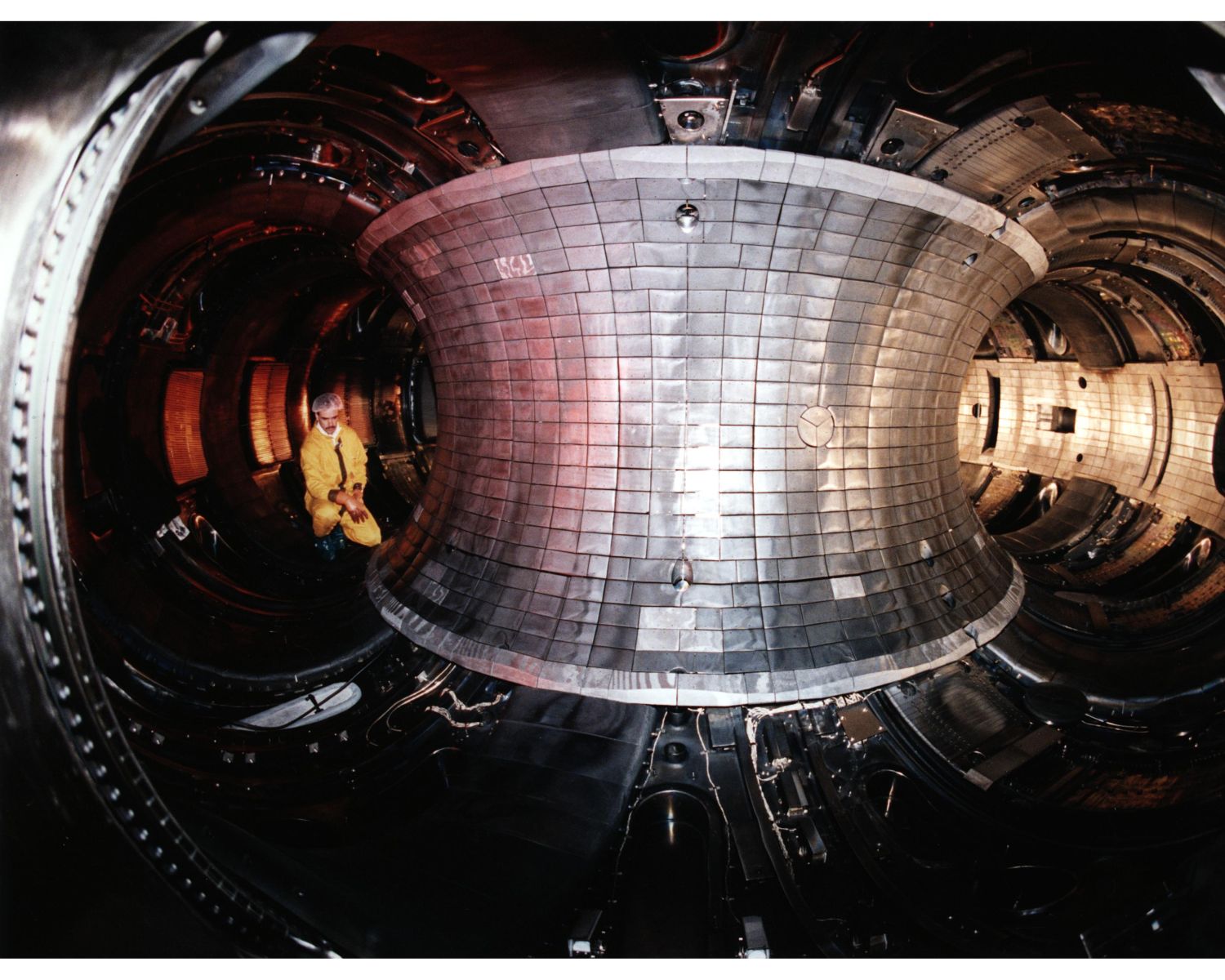
Successful and practical fusion power would have the potential to provide a virtually limitless, clean, and sustainable source of power, with the ability to address global energy demands while minimizing environmental impact.
Fusion refers to a nuclear reaction in which two light atomic nuclei, typically isotopes of hydrogen (deuterium and tritium), combine to form a heavier nucleus. This process releases an enormous amount of energy.
The fusion reaction occurs under extremely high temperatures and pressures, similar to those found in the core of stars. At such conditions, the atomic nuclei come close enough to overcome their natural electrostatic repulsion and fuse together. The result is the creation of a new, more massive nucleus, along with the release of a significant amount of energy.
Fusion has the potential to be a powerful and clean source of energy. It offers several advantages over conventional energy sources:
- Abundant Fuel: The fuel for fusion reactions, deuterium, and tritium, can be extracted from seawater and is virtually limitless, making fusion a potentially sustainable energy source.
- High Energy Density: Fusion reactions release a tremendous amount of energy per unit mass, far greater than conventional chemical reactions. This makes fusion highly efficient in terms of energy production.
- Safety: Fusion reactions do not produce the same radioactive waste as fission reactions (nuclear reactions that split heavy atomic nuclei). Additionally, fusion reactors have a built-in safety feature: if there is a disruption in the fusion process, the reaction stops automatically without a catastrophic chain reaction.
- Reduced Environmental Impact: Fusion does not emit greenhouse gases or other harmful pollutants that contribute to climate change and air pollution.
Hence, nuclear fusion has been described as the "holy grail" of energy production.” Over the last few years, significant breakthroughs in materials science and plasma physics have set nuclear fusion on an exponential growth curve.
Thanks to new developments that sustain a plasma reaction much longer than previously thought possible, six distinct approaches to nuclear fusion — including Magnetized target fusion and Orbitron — are being built by private companies. Tech expert Jeff Brow says the prototype reactors could be tested in early 2024.
Machine learning, one of the software systems for nuclear fusion, has advanced exponentially. Significant private capital has flooded the industry because of all the remarkable technological progress over the past few years. 2022 was a record year for nuclear fusion companies. $4.86 billion was invested in the sector. But of that $4.86 billion, only $117 million was from public funding.
The road to achieving nuclear fusion has been fraught with setbacks, but the recent progress made by the International Thermonuclear Experimental Reactor (ITER) — a multinational collaboration of 35 countries, including the U.S., Russia, China, and the European Union — and private companies like CFS — offers renewed hope that affordable nuclear energy may soon become a reality.
In December 2020, ITER reached a major milestone with the completion of the reactor’s massive steel and concrete structure, which will house the world’s largest tokamak. But while ITER represents the most advanced and well-funded effort to achieve nuclear fusion, several private companies (such as CFS) have also pursued alternative approaches to nuclear fusion — partly driven by the promise of limitless energy with smaller, more cost-effective nuclear plants.
If technological growth and the capital for mainstream nuclear energy happen simultaneously, we could see significant breakthroughs sooner than expected.
On the date of publication, Andy Mukolo did not have (either directly or indirectly) positions in any of the securities mentioned in this article. All information and data in this article is solely for informational purposes. For more information please view the Barchart Disclosure Policy here.






